12 Best Arborist Website Examples to Get You Customers
A professional arborist website helps potential customers find you online, shows them why they should invest in your services, and makes booking appointments easy. It’s also the first step in any tree service marketing strategy.
In this guide, we’ll cover the key elements of a great tree service website and share real examples from tree care companies we know.
The best arborist sites include:
1. User-friendly design
New visitors are looking for information fast, and if they don’t find what they’re looking for quickly, they’ll leave your site in a matter of seconds.
Keep your homepage simple and give the reader the information they need front and center, including:
- Who you are
- What services you offer
- What region and surrounding areas you service
- How clients can get in touch
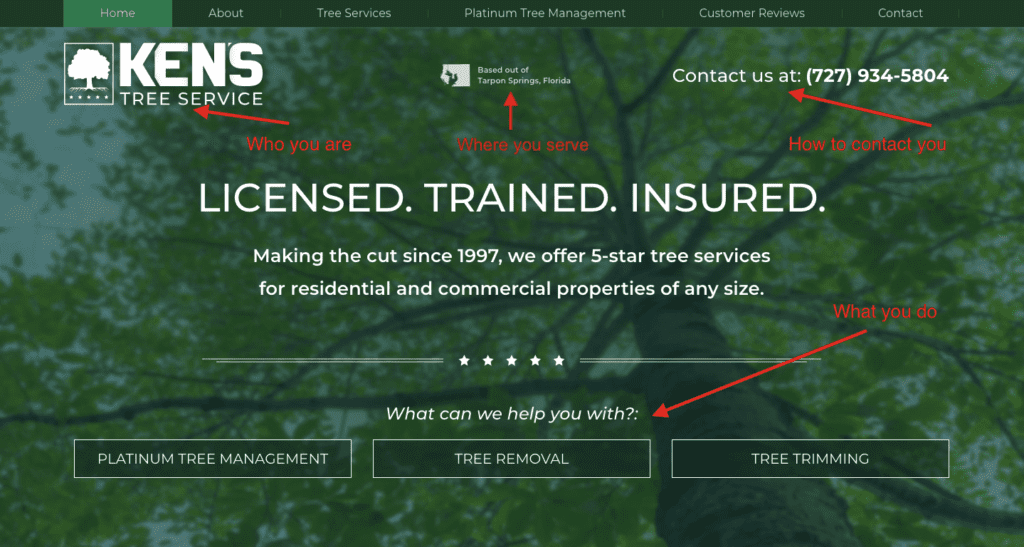
Ken’s Tree Service website homepage makes it easy for potential clients to find what they’re looking for quickly. Their website is clean, user-friendly, and well-designed.
READ MORE: How to build a customer base through a strong online presence
2. Strong branding
Your service business branding helps you stand out from the competition and makes it easier for clients to recognize your tree care business.
To apply your branding to your arborist website, make sure to include your tree company name, logo, brand colors, and fonts.
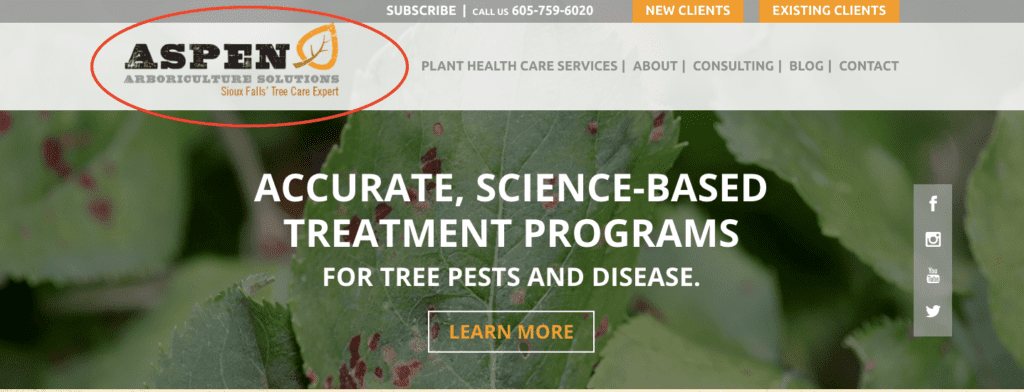
On the Aspen Arboricultural Solutions website, you’ll find a logo in the top right-hand corner of every webpage you visit. Their color scheme and fonts complement their logo and are used consistently throughout their website.
3. Contact information
The easier you make it for clients to contact you, the more likely they will.
Joshua Tree includes their contact information and social media links in a header on every page of their website. This way, potential clients can quickly get in touch no matter where they’re browsing.

They also include a contact page with their phone number, location, and an online booking form.
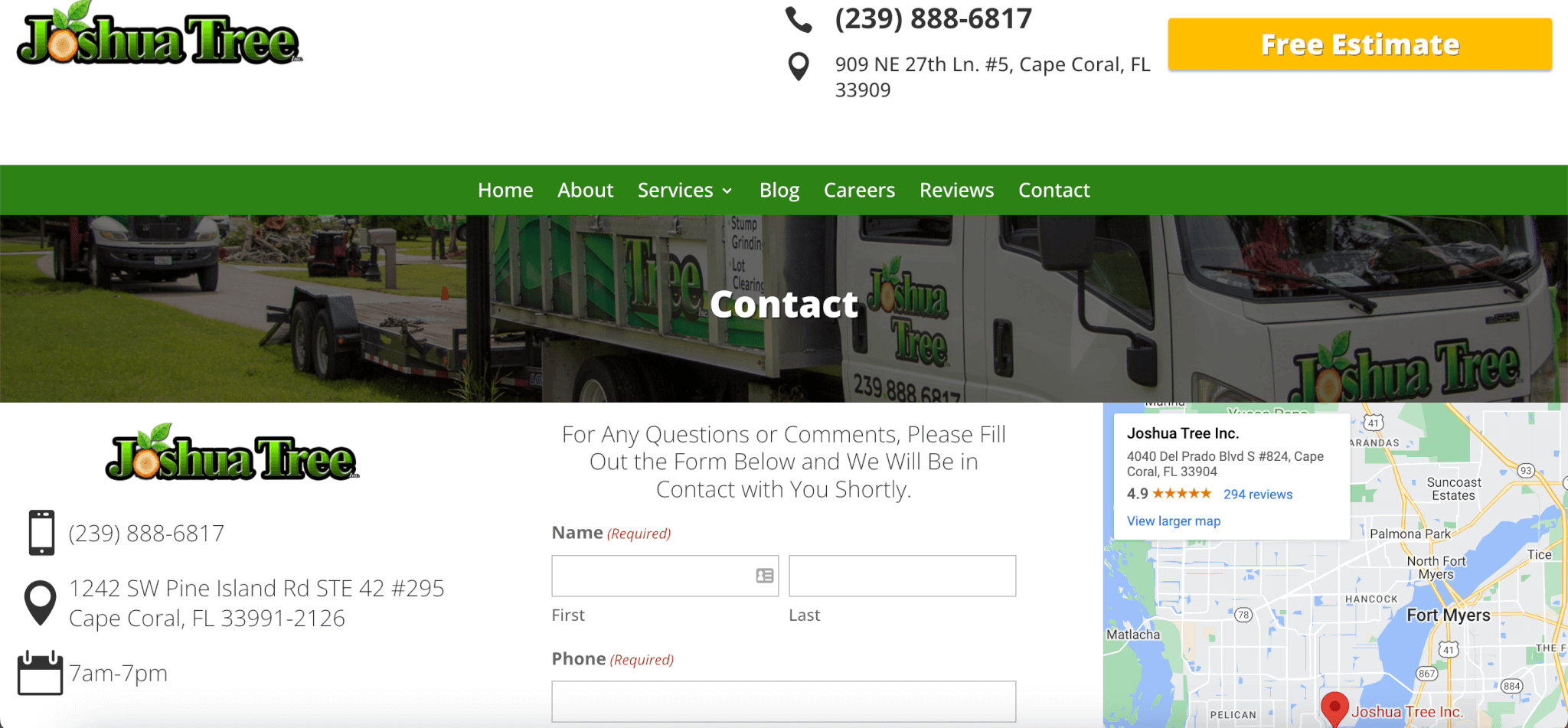
To make it easier for clients to reach out:
- Include your phone number in a very visible spot on your website
- Use call-to-action (CTA) buttons that lead clients to your online booking form
- Have a dedicated ‘Contact Us’ page that includes your phone number, email address, business address, social media links, and online booking form
READ MORE: How the climbing arborist does more of what he loves with Jobber
4. Online booking form
Adding an online booking form to your website lets visitors request new work without calling you and speeds up your sales process.
Make sure to customize your booking form so you collect all the information you need to create a tree care quote.
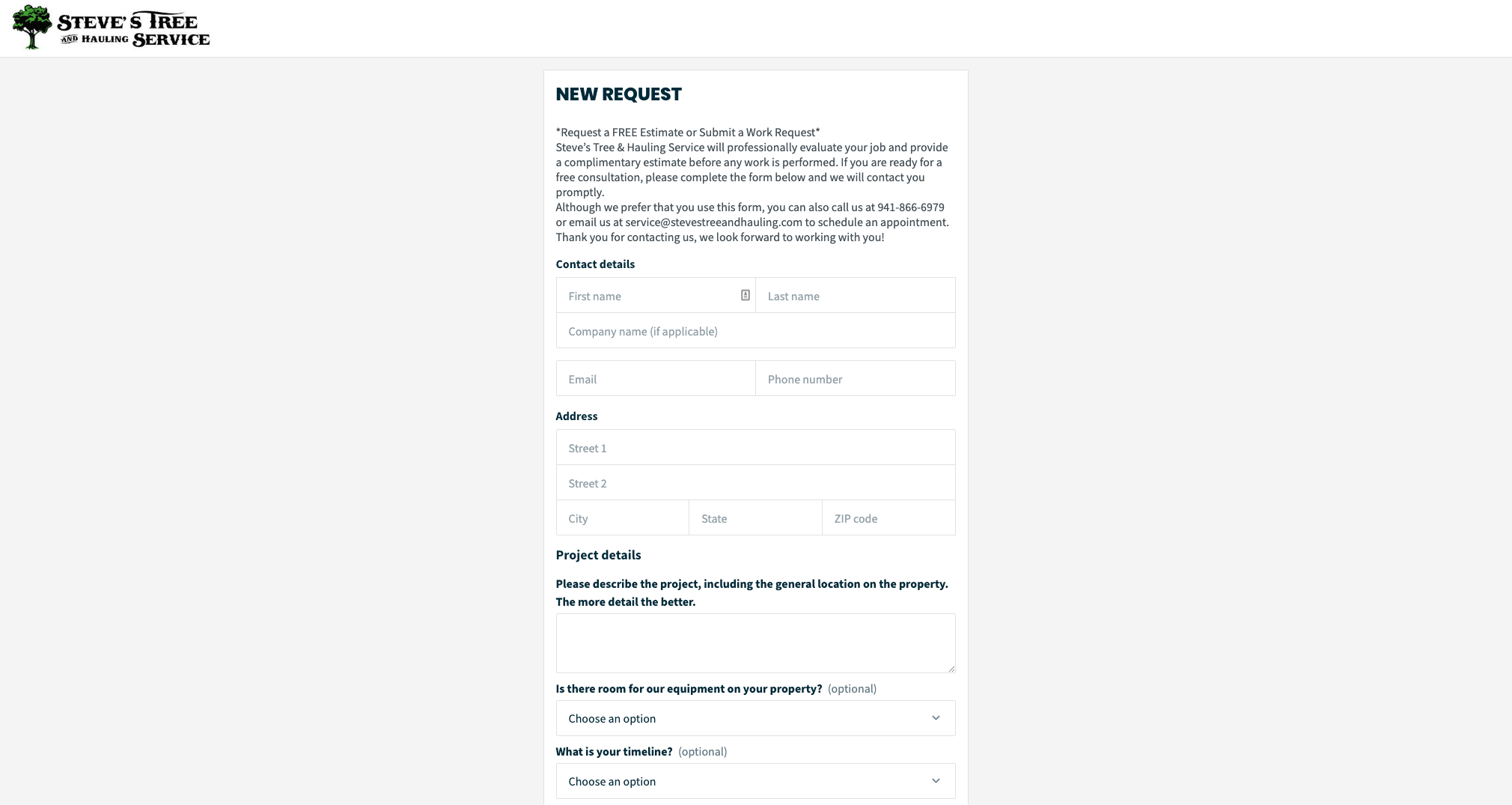
Steve’s Tree and Hauling Service uses Jobber’s online request form to collect contact information and project details from potential customers.
5. Tree care services list
If a potential customer is looking for tree health or tree trimming services, they want to see exactly what work you can provide before reaching out to schedule the job.
Muskogee Tree, for example, lists their four core services (tree removal, tree pruning, fence line and brush, and stump grinding) on their service page. Clients can click the link below each option to learn more, view images of the service, and request a quote.
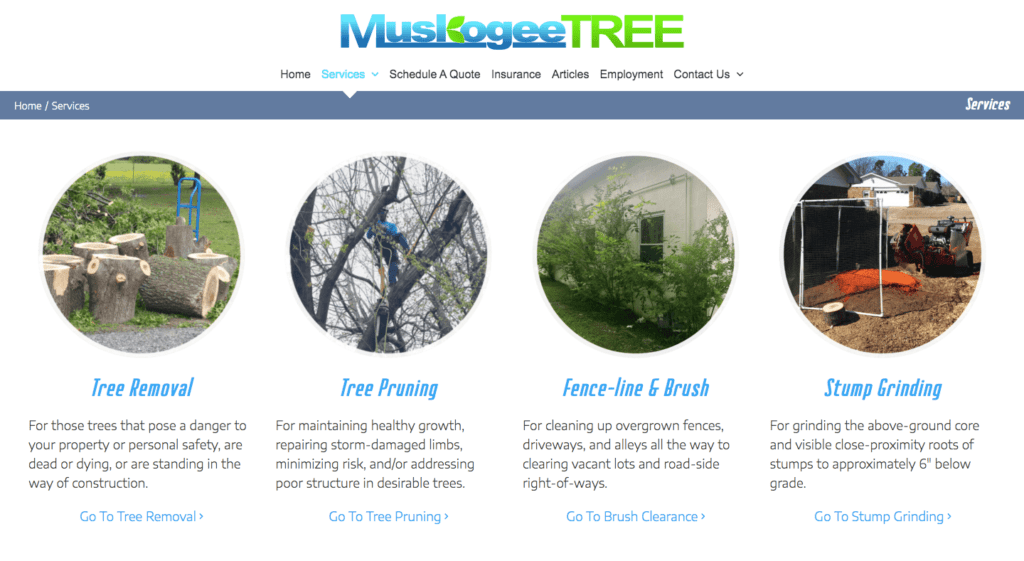
Pro Tip: Help customers quickly book you for a specific service by including a call to action button or phone number on your services page.
6. Arborist certification and insurance
Showing your industry accreditations and business insurance is a sign that you’re trained to do tree work safely and properly. This gives prospective clients peace of mind and makes them more likely to hire you.
Logan Tree Experts has all their certifications and insurance on the ‘About’ page of their site.
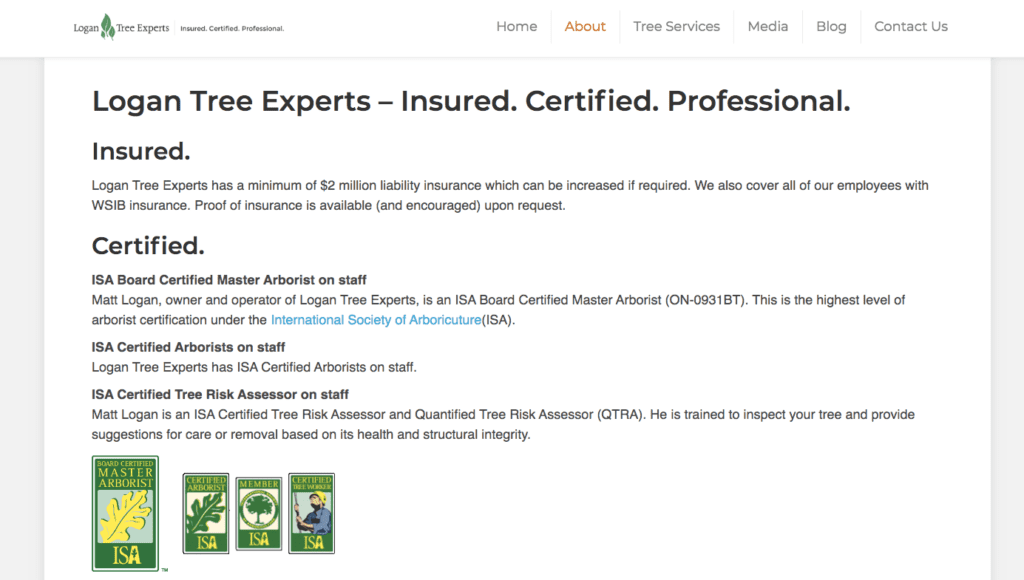
You can also add it to your homepage, footer, and to your social media profiles.
READ MORE: How to become an arborist
7. Competitive difference
Before a client chooses your services, they’re comparing multiple tree care websites to decide which one suits them best. To win their business, your website needs to clearly explain what makes you different from the rest.
This is also called your unique selling proposition (USP). You can add it to your website as a tagline on your homepage or under a “Why Choose Us?” section.
Or, you could provide a list of reasons a client should choose you, like Advanced Tree Care does on their homepage. Their competitive difference is that they only hire ISA-certified arborists, have almost 20 years of experience, and offer free estimates.
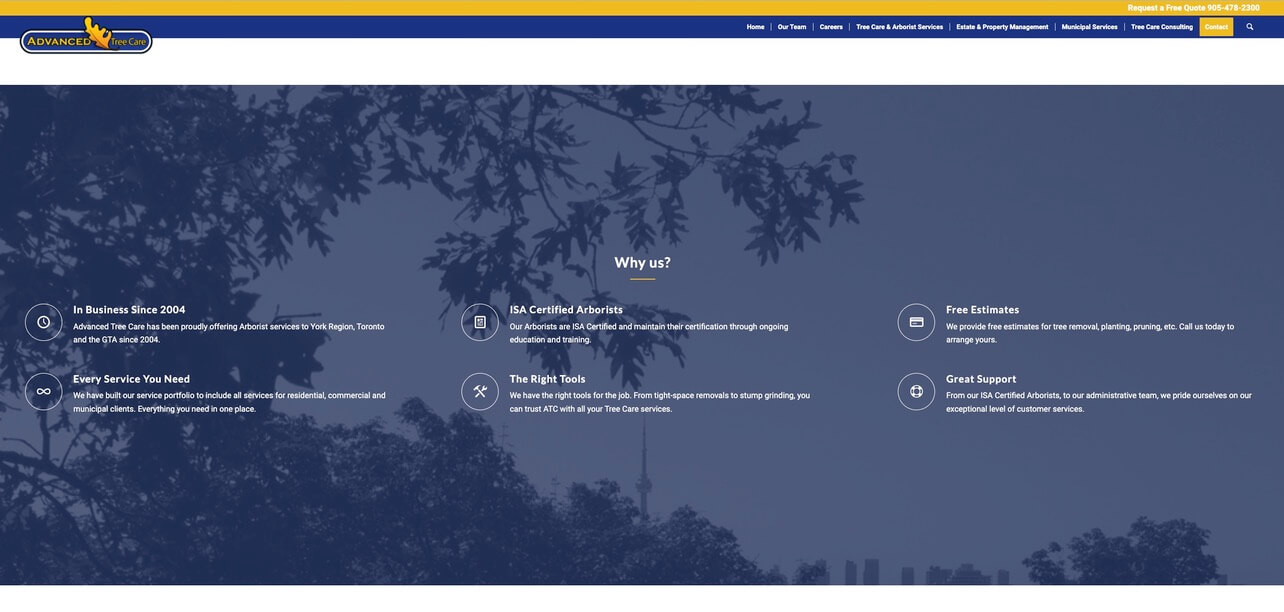
Verdant Plant Health Care’s competitive difference sits right below their main image and a call to action. This lets visitors looking for environmentally responsible tree care services know they’re in the right place.

8. Customer reviews and testimonials
Adding reviews or testimonials to your arborist website can help build trust with prospective clients. This kind of social proof shows that other clients are happy with your tree services.
Green Leaf Tree Services has a dedicated page for reviews. To keep their page up to date without adding reviews manually, they use NiceJob to automatically pull customer reviews onto the page. They also include links for customers to leave a review on Facebook or Google.
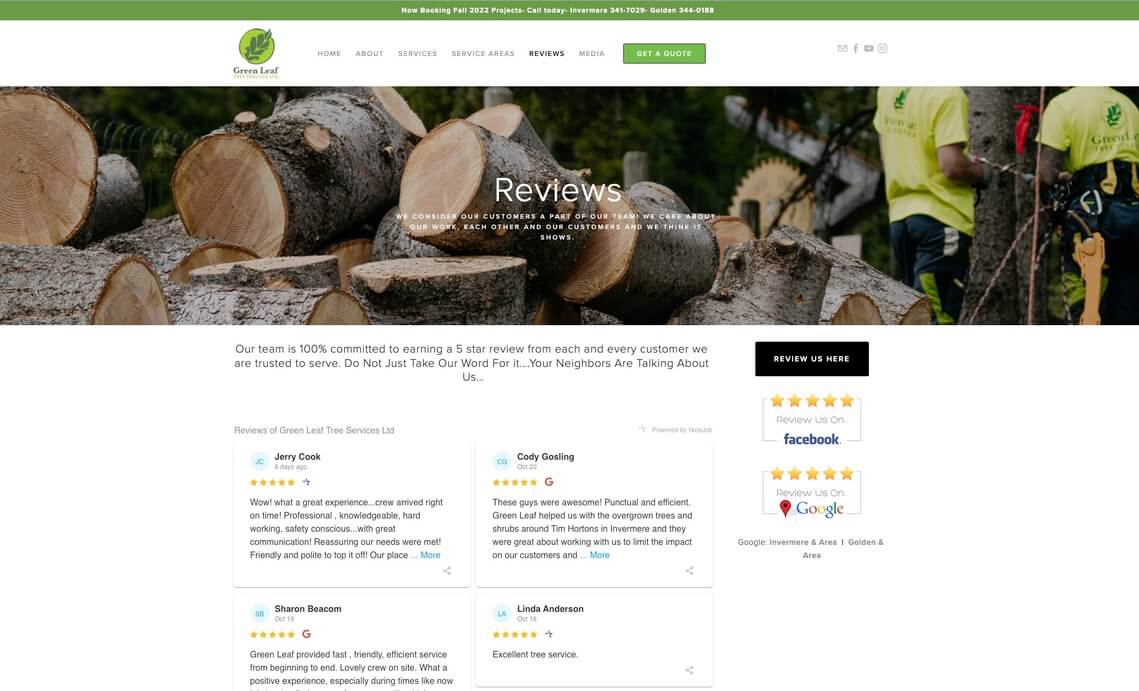
9. Photos of your work
Include original photos of your work and your team to show potential clients you run a credible company that does quality work.
Grizzly Tree Services has a photo and video gallery on their website to show off their work.
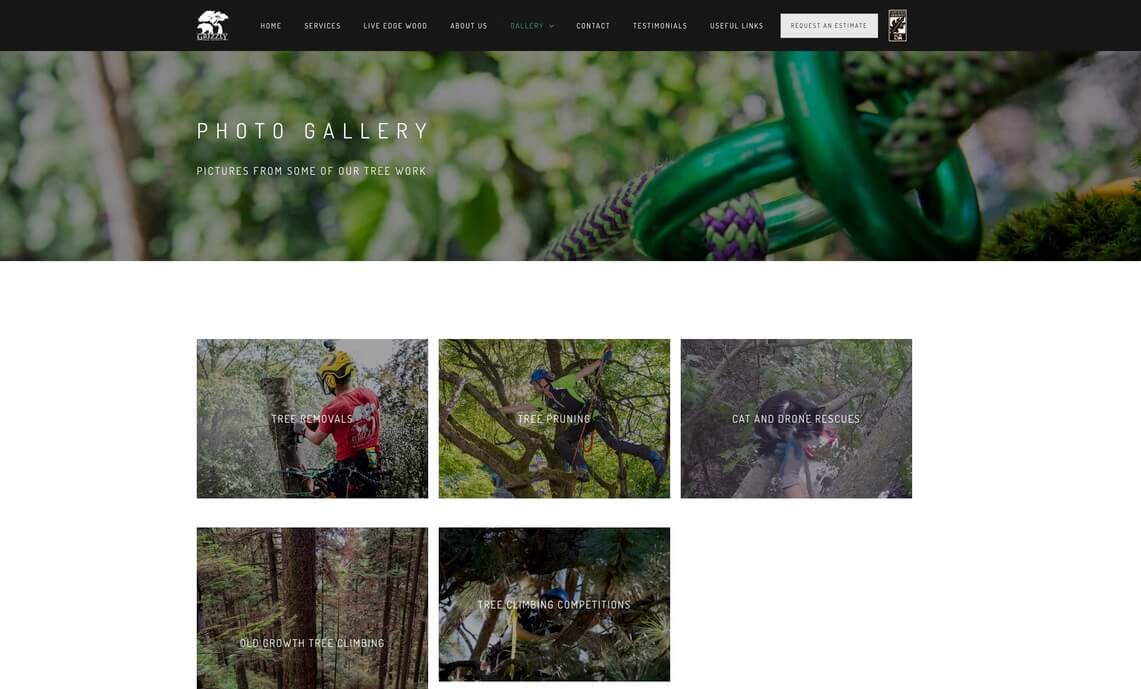
TreeCareLA includes images of their crew on their ‘About’ page, along with a short description of what each employee does. It shows they are a legitimate tree care company you can be comfortable letting onto your property.
READ MORE: Hire qualified employees faster with an arborist job description
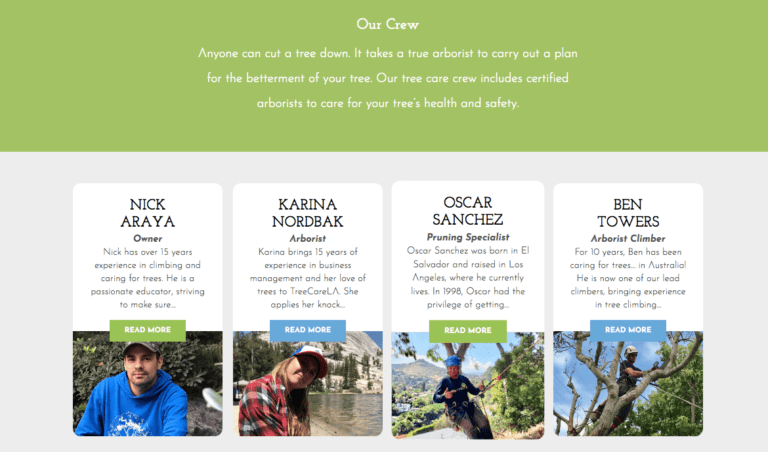
Here are a few ideas of photos to include on your tree service website:
- Before and after photos of jobs completed
- You and your team in uniform and on a job site
- Your company vehicles
- A short video talking about your background story, services you offer, and mission
10. Tree service blog
Sharing your tree care industry knowledge through a blog can help your business build a reputation as a trusted tree service provider. If you learn how to use search engine optimization (SEO) properly, your blog can even attract new website visitors from Google Search.
Chestnut Tree and Landscape uses their blog to inform clients about the best types of trees to plant, how to deal with tree removal emergencies, and more. The company adds new blog posts monthly.
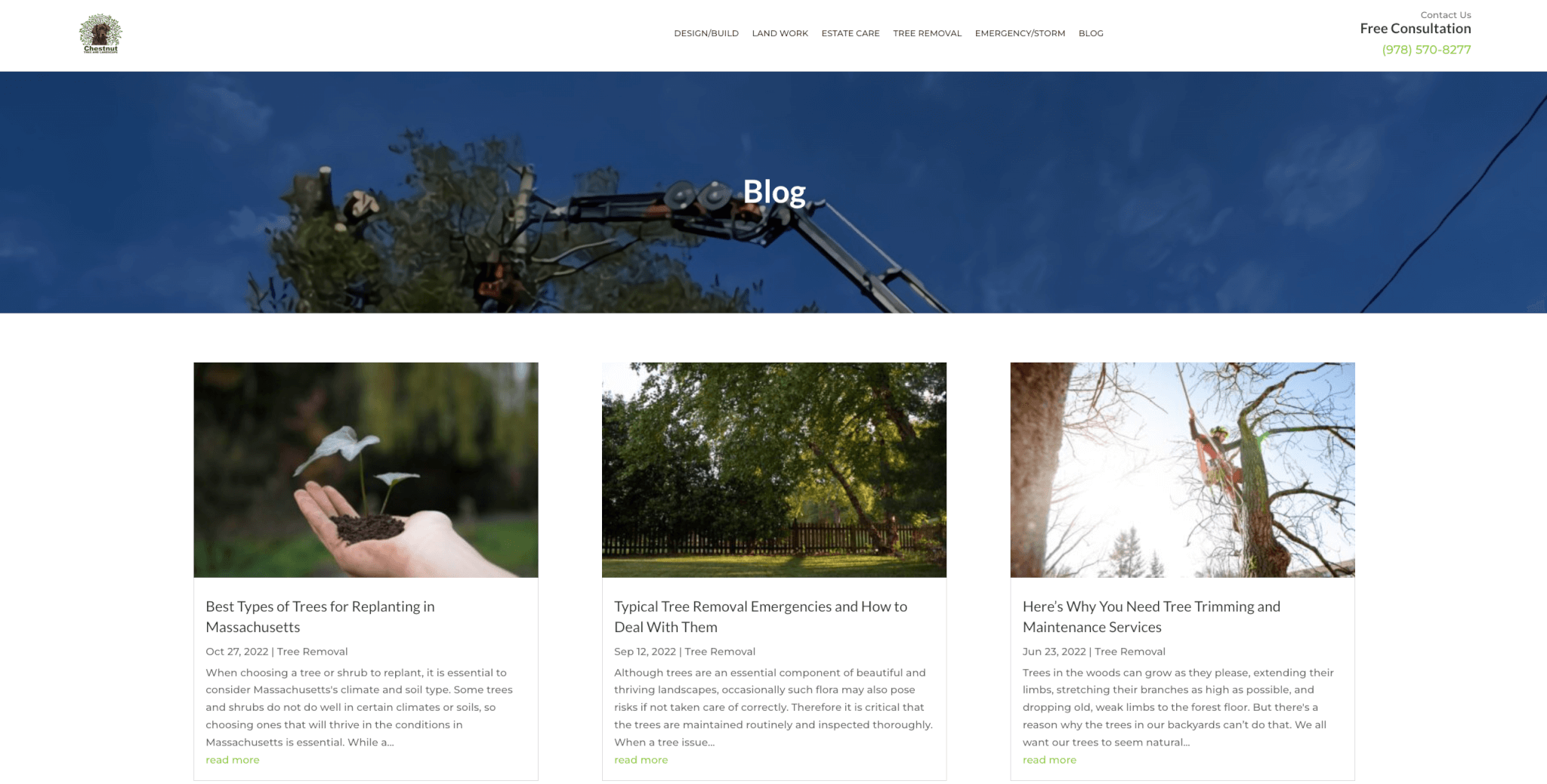
11. Responsive website design
A responsive design means that your website automatically resizes to adjust to the visitor’s screen size, whether they’re using a desktop computer, laptop, phone, or tablet.
Since more and more consumers use their mobile devices to search for services, you’ll miss out on potential customers if your website doesn’t load quickly or look good on every device.
Here’s how Advanced Tree Care’s website looks on both mobile and desktop.
Mobile:
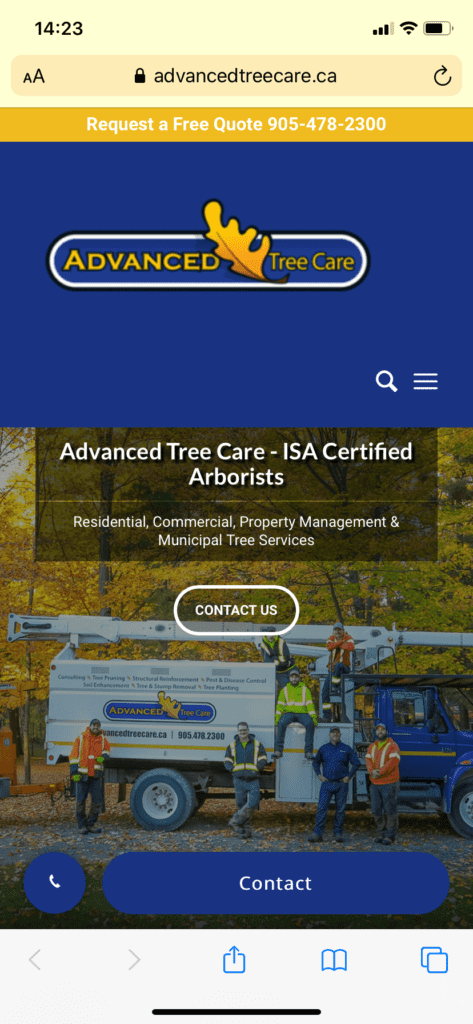
Desktop:
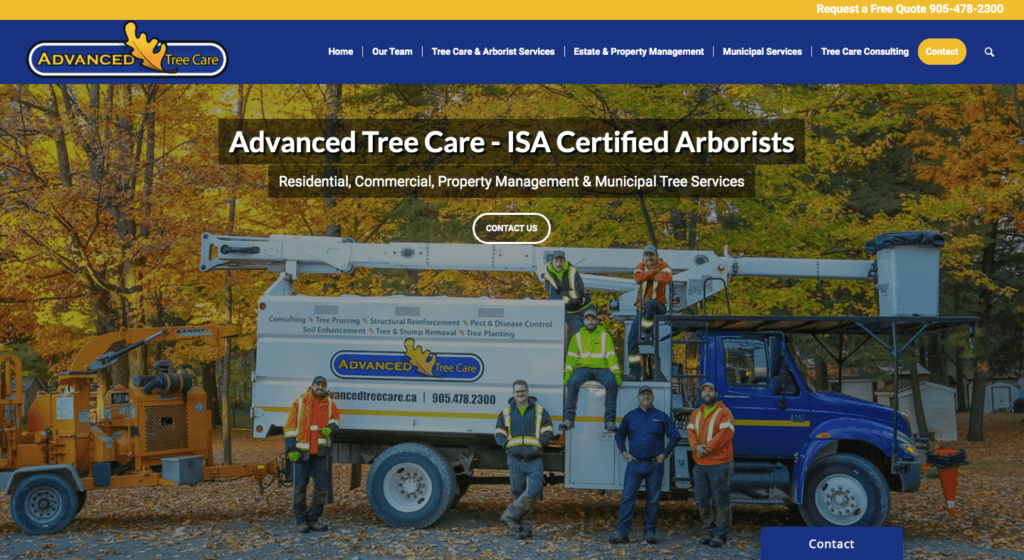
12. Search engine optimization
Now that you’ve built your best arborist website, you need to make sure it shows up in search results when local customers are looking for a tree care professional. Here are a few simple ways to optimize your website for search engines using SEO:
- Use keywords that mention your services and the area you service, like “tree trimming Chicago” or “certified arborist Illinois”
- Create a Google Business profile that includes your contact information, website URL, tree services list, and images
- Follow up with customers and ask them for a review
READ MORE: A complete guide to tree service ads
Create an arborist website that gets you more leads
Now that you’ve seen a handful of great tree service websites, you’re ready to make one of your own.
You can build one yourself using website builders like Wix or Squarespace, or hire a freelancer or agency to build your website for you.
Just keep the above elements in mind and you’ll create a website that attracts more visitors and generates more leads for your tree service business.
Originally published May 2020. Last updated on November 4th, 2022.